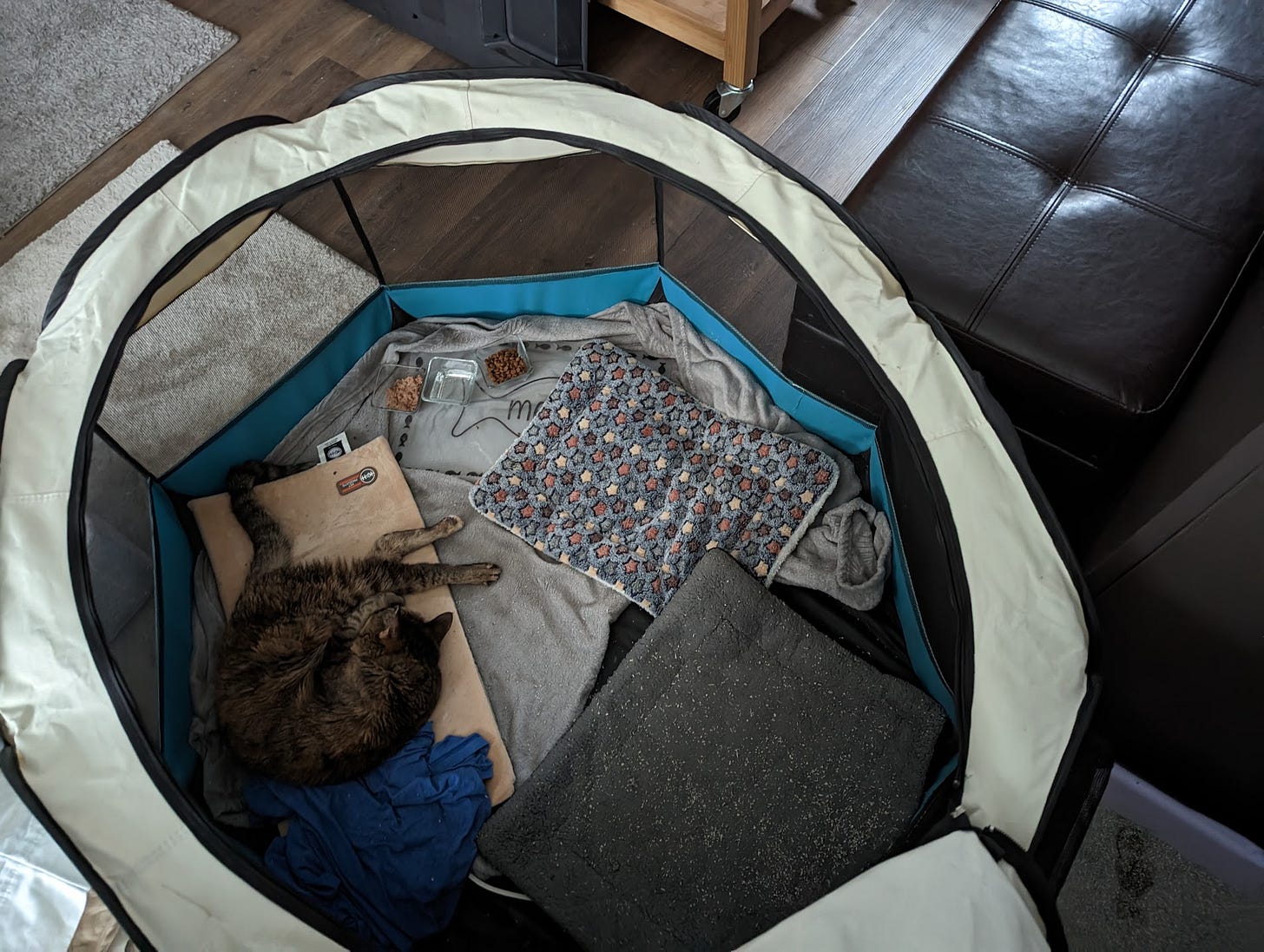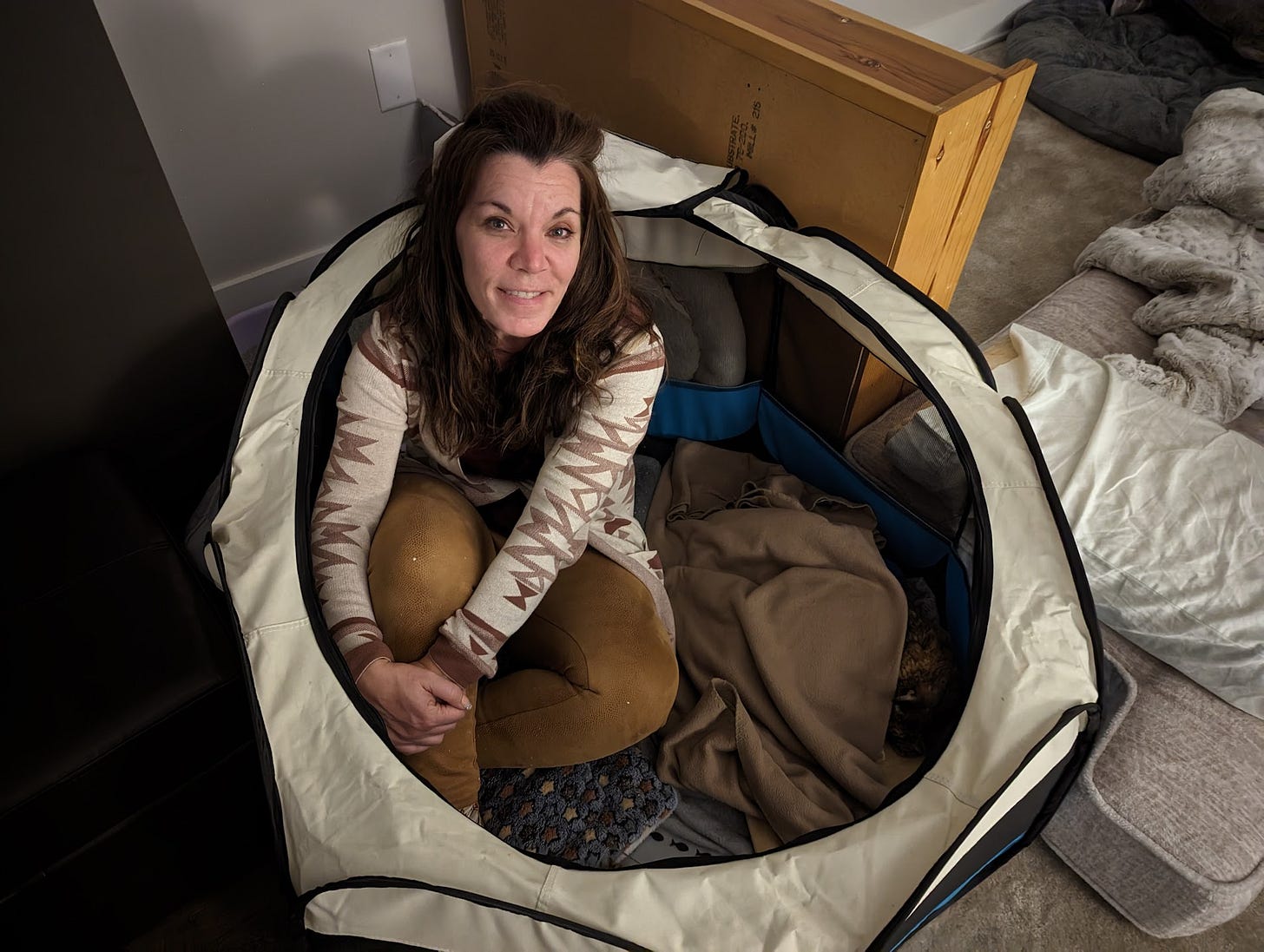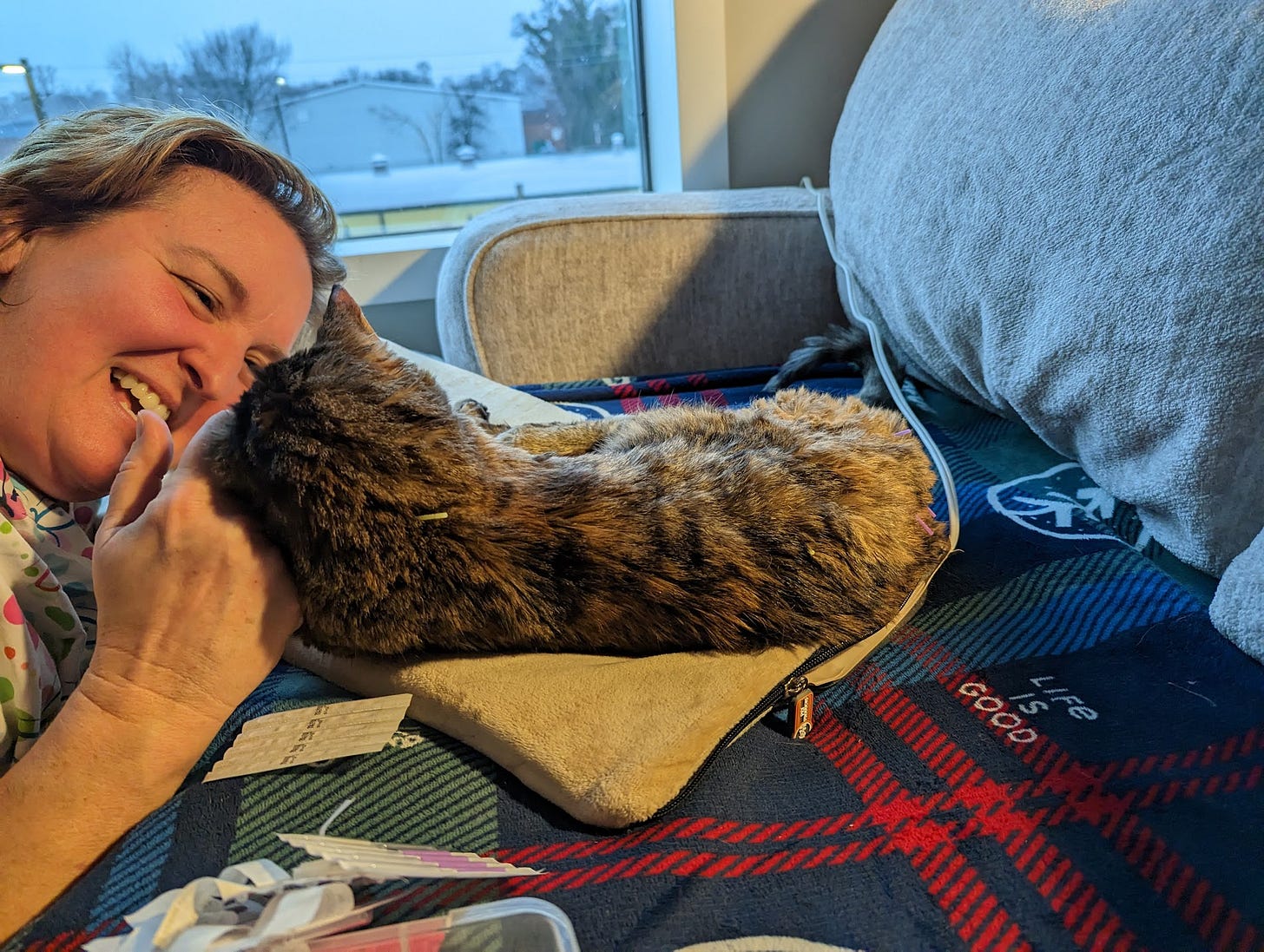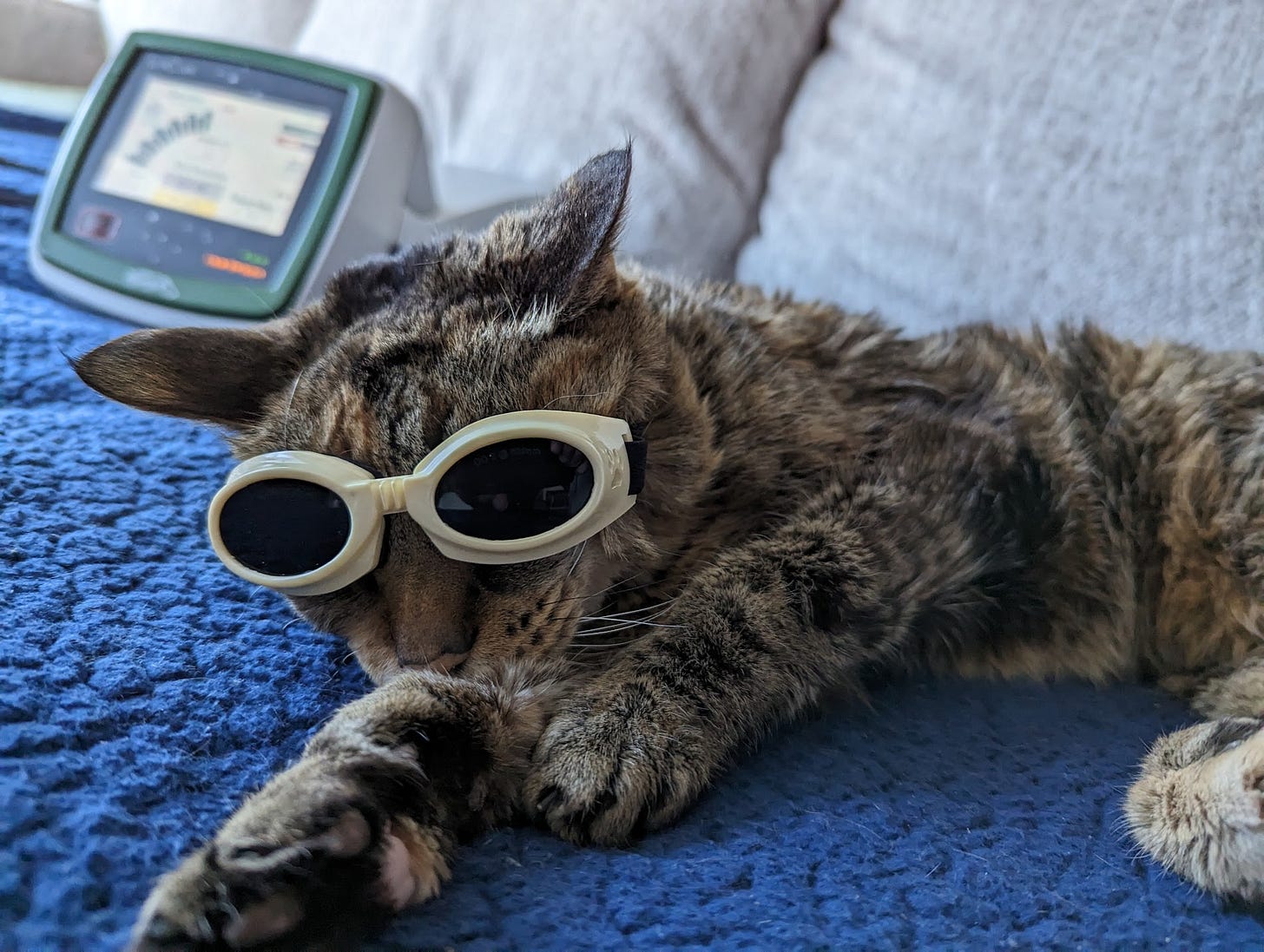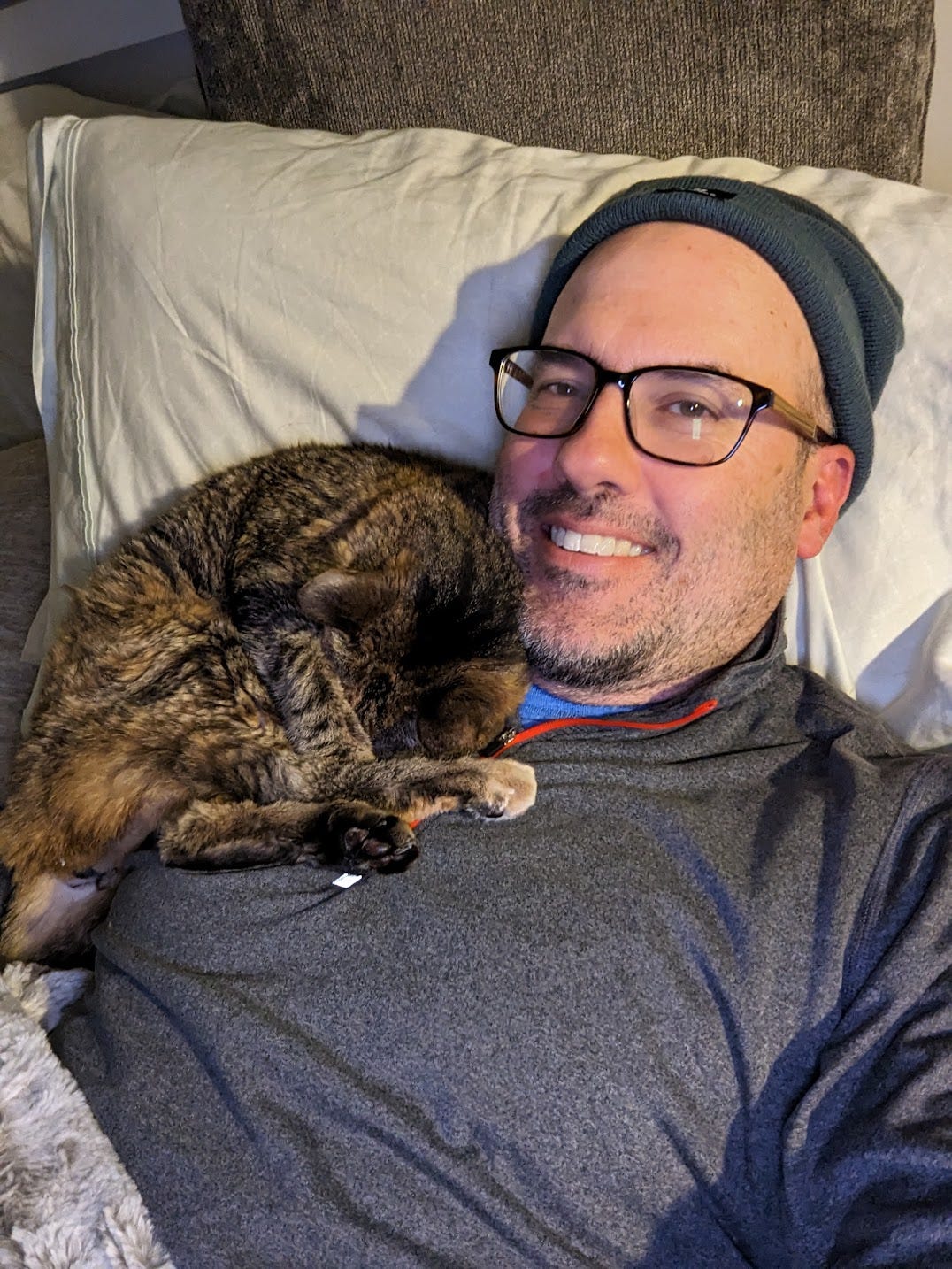The Six Months I Slept on the Floor With My Cat
I knew I wasn't going to leave her...
A New Year, A New Challenge
On New Year’s Day 2023, I returned from a hike to find Mia, my then 19-year-old cat, struggling more than usual. She’d had arthritis for years, as well as kidney disease, but now she was dragging her leg. At first, it seemed intermittent, but by the end of the week, her mobility had significantly declined.
It was heartbreaking to watch her struggle. She could barely get to her food, water, or litter box. That week, I realized we were entering a new chapter—one that would test both of us.
Creating Comfort During the Hardest Days
My vet, Dr. Wulforst at Riverside Vet, suggested bed rest to prevent further strain. I borrowed a doggie playpen from Bailey, a University of Tennessee vet student who had been coming over to give Mia fluids for her kidney disease. We set up the playpen with her food, water, and a nearby litter box. It was just a couple of feet for her to get to anything she needed, but watching her drag herself even those few steps was heartbreaking.
Even with these accommodations, watching her drag herself the short distance to her litter box was painful. I fed her by hand to encourage her to eat and moved my sofa cushions to the floor to sleep beside her at night. For 19+ years, Mia had slept with me. There was no way I’d leave her alone now.
Here’s Mia in her playpen, and the other picture with my friend Lori, helping make her feel comfortable.
Exploring Alternative Treatments
On Saturday of that week (about 5 days after we put her in the doggie playpen), I started to get worried that this might be it. But I knew I wasn’t ready to say goodbye, so I started researching alternative care options. That’s when I found a holistic vet who made house calls, and we began a course of acupuncture and cold laser therapy, which was supposed to be beneficial for her mobility AND her kidney function. I was so thankful for Dr. Lockerman coming over to help Mia. Here’s a picture of Mia getting acupuncture. And a funny picture of Mia with goggles on. She had to wear those when she was getting the laser treatment.
Slowly, Mia regained some mobility. She wasn’t able to climb her pet stairs to the sofa or bed anymore, but she could walk again without dragging her leg.
Even though I couldn’t give her back her old life, I could make her feel loved and supported. For the next six months, I slept on the floor beside her. I wanted her to know she wasn’t alone, that I would always be there for her, just as she had been for me.
Why Golden Whiskers Exists
Caring for Mia during her senior years changed me. It taught me how challenging—and rewarding—senior cat care can be.
This experience was one of the hardest of my life—but it also opened my eyes to the world of senior cat care. It showed me how much love, patience, and creativity it takes to give our senior cats the best quality of life. It’s not easy, and it’s not always straightforward. But it’s worth it.
This journey with Mia is one of the reasons I started Golden Whiskers. I want to help other cat parents who might feel overwhelmed or unsure of how to care for their aging cats. Whether it’s sharing knowledge, providing resources, or simply offering a community of understanding cat lovers, my goal is to make senior cat care more manageable—and to remind everyone that it’s always worth it.
Mia taught me so much about resilience and love, even in her final days. Through Golden Whiskers, I hope to honor her legacy by helping others give their cats the same care and devotion.
Your Turn: What’s Your Senior Cat Story?
Mia’s journey was full of love, patience, and resilience. I’d love to hear about your own experiences with your cats—especially your senior cats. What lessons have they taught you? What’s been your biggest challenge or most rewarding moment?
Please feel free to comment and share your story with me—I might feature it in a future issue of Golden Whiskers! Or heck, just share a picture of your precious feline!
Thank you for reading. I’m so grateful for you!



